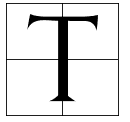 he Bible is one of the most widely read and influential books in human history. It is the sacred text of Christianity and contains the teachings and stories of Jesus Christ and his followers. However, despite its widespread popularity, the question remains: does the first copy of the Bible still exist?
he Bible is one of the most widely read and influential books in human history. It is the sacred text of Christianity and contains the teachings and stories of Jesus Christ and his followers. However, despite its widespread popularity, the question remains: does the first copy of the Bible still exist?
To answer this question, we must first understand the origins of the Bible. The Bible is composed of two main parts: the Old Testament and the New Testament. The Old Testament was written primarily in Hebrew, while the New Testament was written in Greek. Both parts were compiled over a period of several centuries, with the earliest books dating back to around 1200 BCE.
The Oldest Known Complete Copy of the Bible
The first copy of the Bible, therefore, would have been a collection of separate books and manuscripts, each written by different authors at different times. The earliest known complete copy of the Bible is the Codex Sinaiticus, which dates back to the 4th century CE. This manuscript contains both the Old and New Testaments and is written in Greek.
The Codex Sinaiticus was discovered in 1844 by German scholar Constantine von Tischendorf in the monastery of Saint Catherine on Mount Sinai in Egypt. It is believed to have been written in the mid-4th century by a group of scribes, possibly in Alexandria, Egypt. The manuscript is written on parchment, with each page measuring about 13 inches by 14 inches. It contains over 400 pages, including the complete New Testament and a large portion of the Old Testament.
While the Codex Sinaiticus is the oldest known complete copy of the Bible, it is not the only ancient manuscript that exists. There are many other manuscripts that contain portions of the Bible, some of which are even older than the Codex Sinaiticus. For example, the Dead Sea Scrolls, discovered in the 1940s and 1950s in the Qumran caves near the Dead Sea, contain fragments of every book in the Old Testament except for the book of Esther. The Dead Sea Scrolls date back to the 2nd century BCE, making them some of the oldest surviving copies of the Bible.
Another important manuscript is the Codex Vaticanus, which dates back to the mid-4th century CE and contains the entire Bible in Greek. It is currently housed in the Vatican Library in Rome and is considered one of the most valuable manuscripts in existence.
Challenges in Studying Ancient Manuscripts
One of the challenges in studying ancient manuscripts is the fact that they are often incomplete or damaged. Many manuscripts have been lost or destroyed over the centuries, either through natural disasters or intentional destruction. In addition, the process of copying and recopying manuscripts over the centuries has led to errors and variations in the text.
Techniques for Studying Ancient Manuscripts: To overcome these challenges, scholars use a variety of techniques to study ancient manuscripts. For example, they may use ultraviolet light to reveal hidden or faded text, or they may use computer software to compare different versions of the same text and identify variations. By studying multiple manuscripts, scholars can also identify common themes and variations in the text, which can provide important insights into the history and development of the Bible.
Other Sources of Information About the Bible: In addition to ancient manuscripts, there are also many other sources of information about the Bible, including archaeological discoveries and historical documents. For example, archaeologists have uncovered numerous artifacts and inscriptions that provide evidence of the events and people described in the Bible.
Avid Writer with invaluable knowledge of Humanity!
Upcoming historian with over 30 million views online.
“You make your own life.”





